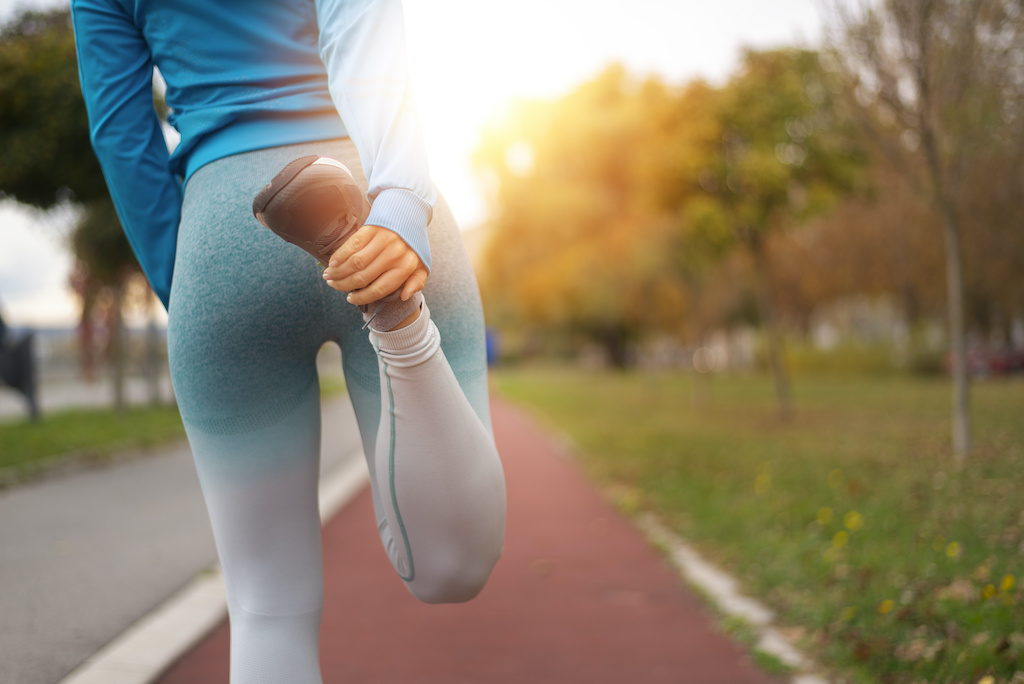After a running session, the act of stretching allows your heart rate to return to normal while encouraging muscle recovery. What are the best stretches to practise and how can they help release tension? Discover the right technique for stretching after running.
Why stretch after a running session?

Just like warm-ups, stretching is essential to maximise the benefits of your running session. However, you need to know what types of stretching to do and when in order to get the most out of your running session.
Stretching and running: a controversial topic
There are some sports experts who are sceptical when it comes to stretching. Previously, static stretching, which consists of holding a position that puts a muscle under tension for a few seconds, was recommended before and after training. However, some studies suggest that this practice performed before training may increase the risk of muscle injury and be counterproductive by reducing the ability to run fast for a few minutes.
Static stretching is highly beneficial, but should ideally be done at the end of the running session. In order to warm up the muscles, tendons and joints before the workout, it is best to perform dynamic stretching, i.e. repeated movements, to prepare the muscles for the workout without straining them over a long period of time.
The benefits of stretching after running
Properly implemented, static stretching after a running session can offer multiple benefits:
- It reduces the risk of injury
- Reduces muscular tensions during the workout session
- Improves range of motion and flexibility
- Promotes muscular recovery
- Restores good blood circulation that promotes the elimination of toxins and improves oxygenation of the muscles
Our tips for stretching properly after a run

In order to perform your stretches in the best conditions, take into account your state of tiredness and be particularly vigilant in case of a previous injury.
At the end of your run, you can do a warm-up stretch just after the session. Perform static stretches for 20 seconds, exhaling as you extend your muscles. Properly performed stretches should be painless, so be aware of how you are feeling so as not to over-stretch, which can weaken the muscle tissues.
5 basic stretches to perform after running

With these 5 ideas for static stretching exercises to do after running, you will be able to stretch the main muscles of your lower body that are used during a running session.
Back stretching
To stretch your back after a run, stand in front of a fence or railing and then grab it at shoulder height with your arms outstretched and feet hip-width apart. Bend your legs slightly, push your chest backwards, hold yourself with your arms while keeping your feet still to round your back. Hold this position for 20 seconds while exhaling deeply.
Thigh stretching
Stand with your feet spread apart to the width of your pelvis, grab one leg from behind at the ankle, making sure to bend your knee so as not to put too much strain on your back. Hold it back under the buttocks for 20 seconds, contracting the abdominals. During the pose, the pelvis must not move.
Adductor stretching
Sitting on the ground with your knees splayed and feet drawn close to the waist, join the 2 soles of your running shoes by holding them with your hands and press lightly on your knees with your forearms to exert tension on the adductors. Hold the position for 20 seconds.
Calf stretching
Stand facing a wall and place your hands flat on the wall at shoulder height with your arms outstretched. Put one leg back and lean towards the wall until you feel tension in your calves. Maintain this position and remember to invert your legs to stretch both calves evenly.
Hamstring stretching
Stand facing a step with your hands on your hips. Place the back of one heel on the step with your toes in the air and then bend over gently, with your leg extended, until you feel tension in the back of your thigh. Stay in this position for 20 seconds.
Check out our Fitness & Training page for more advice.
